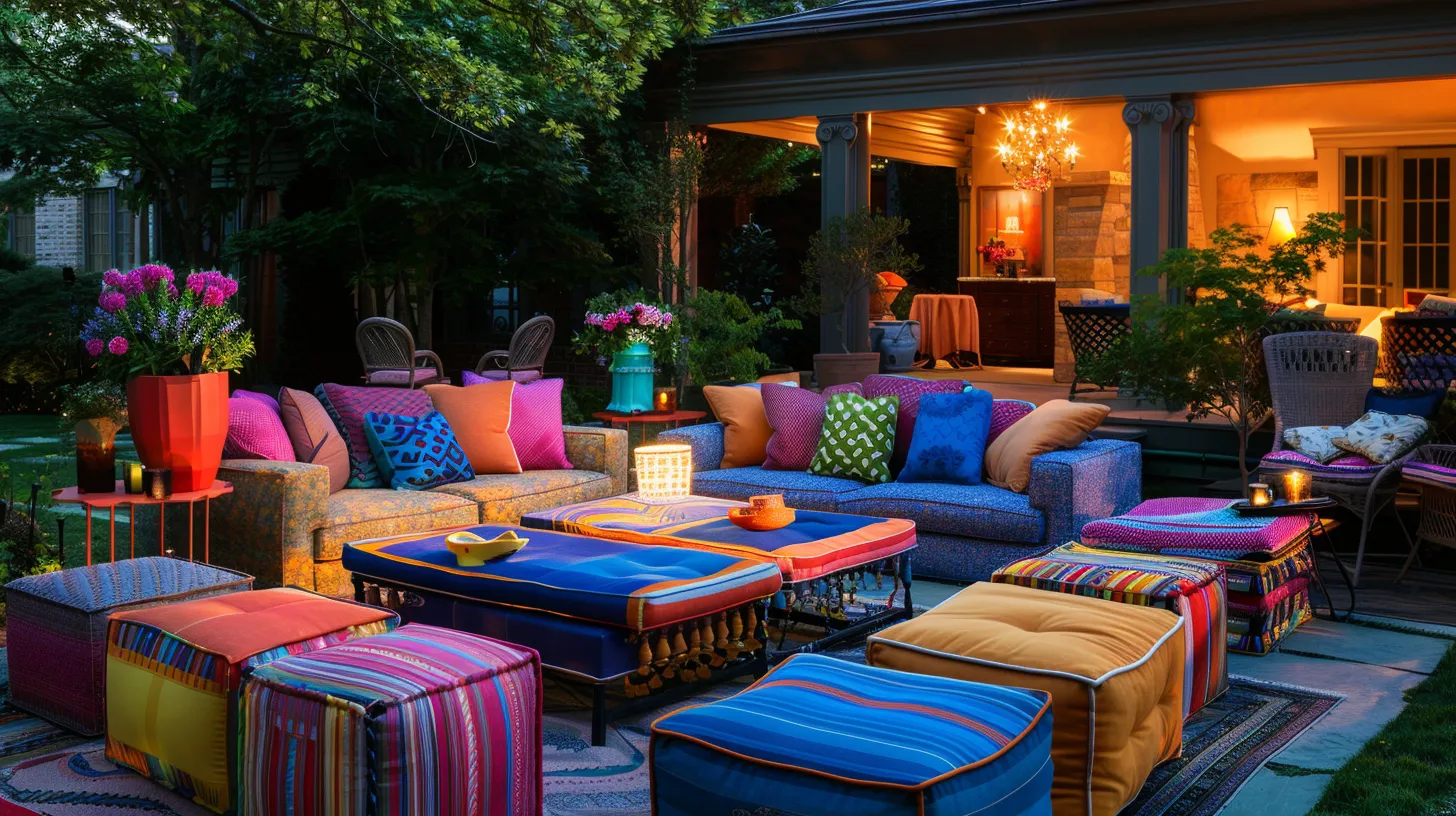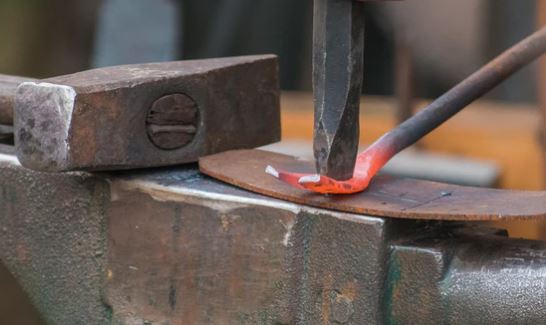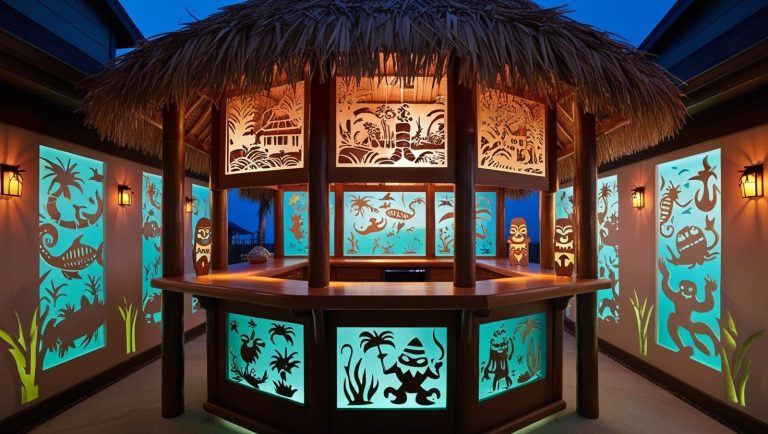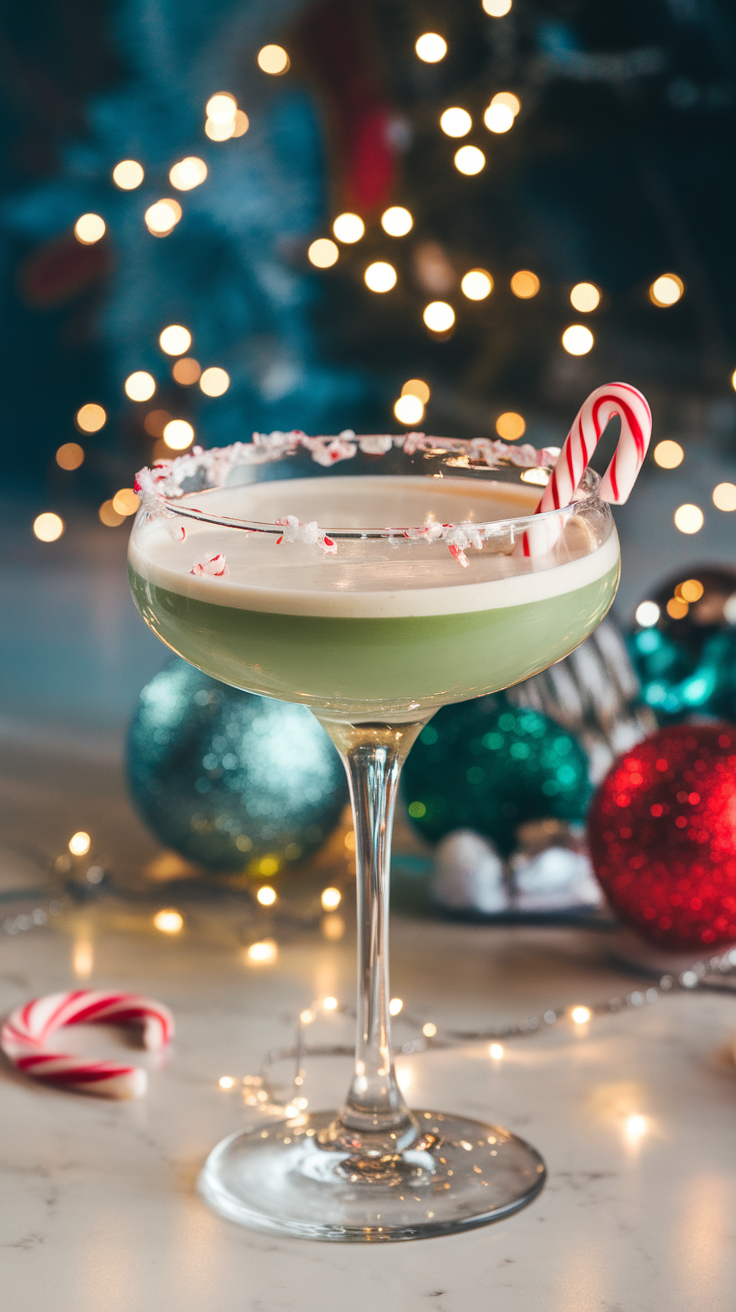Color Your Way to the Perfect Patio: A Practical Guide
Colorful Patio Decorating Ideas
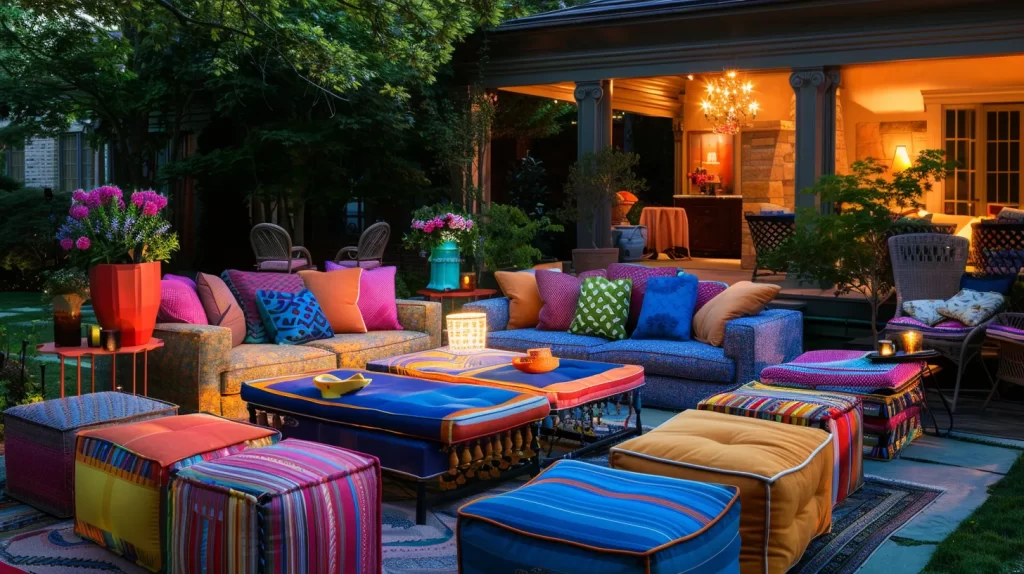
Your patio isn’t just an extension of your home—it’s your personal outdoor sanctuary. And the colors you choose can transform it from an ordinary space into an extraordinary retreat that reflects your personality and enhances your mood. While furniture shape and material matter, color is what truly brings your outdoor space to life and creates lasting impressions on both you and your guests.
Why Color Matters on Your Patio

Color does more than please the eye—it shapes experiences. The right color palette can make your small patio feel more spacious, turn a blazing hot deck into a visually cooling oasis, or transform a dull corner into the focal point of your backyard gatherings.
Unlike interior spaces, outdoor areas interact with natural light throughout the day, creating a dynamic canvas where colors shift and evolve with the sun’s movement. This natural interplay offers unique opportunities to create a space that feels different—yet always inviting—morning, noon, and evening.
Selecting Your Perfect Patio Palette
When choosing colors for your patio, start by considering how you want to feel in the space:
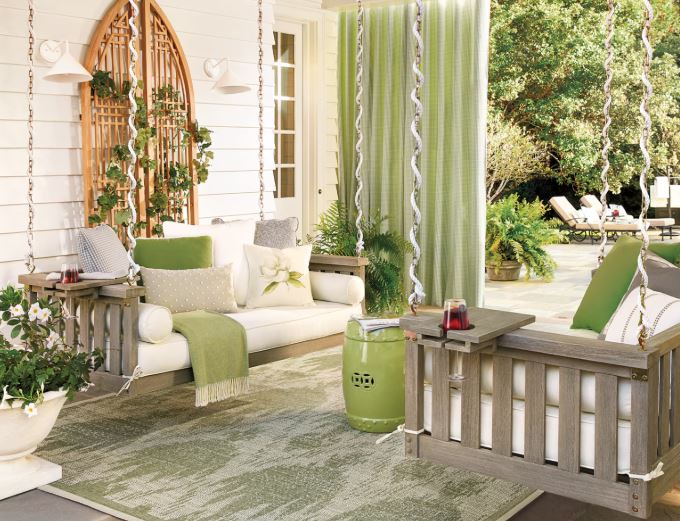
For relaxation and tranquility, blues and greens create a peaceful atmosphere. A deep teal lounge chair or sage green cushions can transform your patio into a calming retreat. These cooler tones also visually recede, making them perfect for smaller spaces that you want to appear more expansive.
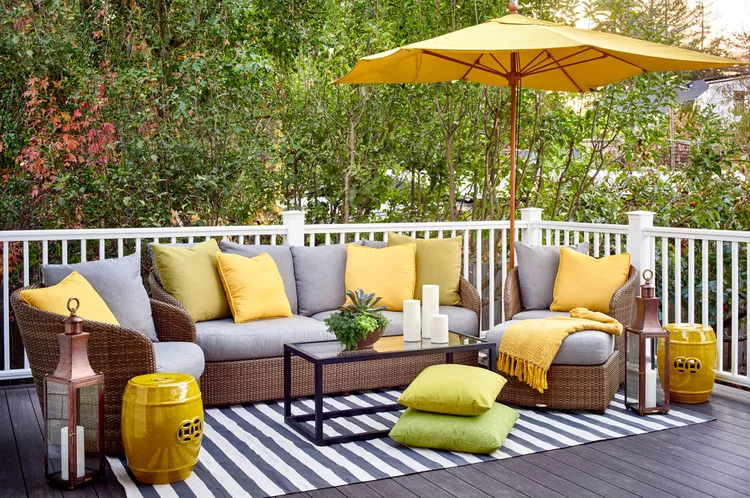
To energize social gatherings, incorporate vibrant oranges, reds, or yellows. A coral dining set or sunshine-yellow accent pillows naturally stimulate conversation and create a festive atmosphere. These warm colors advance visually, making them ideal for large patios where you want to create intimate gathering spots.
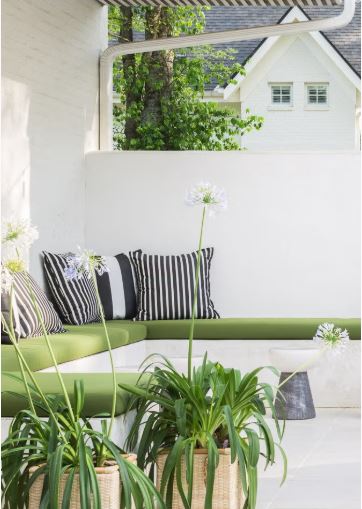
For versatility and timelessness, neutrals like warm beiges, soft grays, and crisp whites provide the perfect foundation. These colors work with virtually any architecture and allow seasonal accents to shine. A set of white Adirondack chairs or a gray wicker sofa can serve as your canvas for years, while colorful accessories refresh the look whenever you desire.
Where Color Makes the Biggest Impact
The most strategic places to introduce color on your patio are:
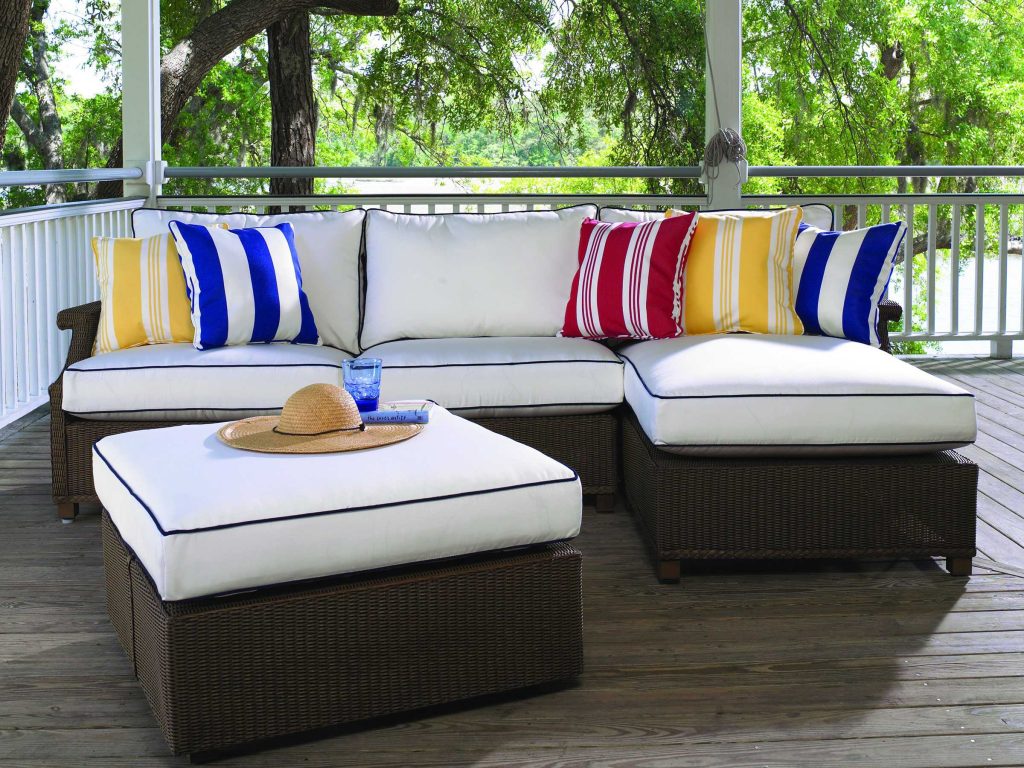
Cushions and pillows: These offer the biggest color impact for the smallest investment. For maximum flexibility, consider neutral furniture with colorful cushions that can be changed seasonally or when your tastes evolve. Deep sapphire cushions can cool down summer gatherings, while burnt orange pillows can warm up autumn evenings.

Outdoor rugs: An often-overlooked element, a well-chosen rug anchors your seating area while introducing pattern and color underfoot. Look for weather-resistant materials in hues that complement your cushions while disguising inevitable outdoor dirt.
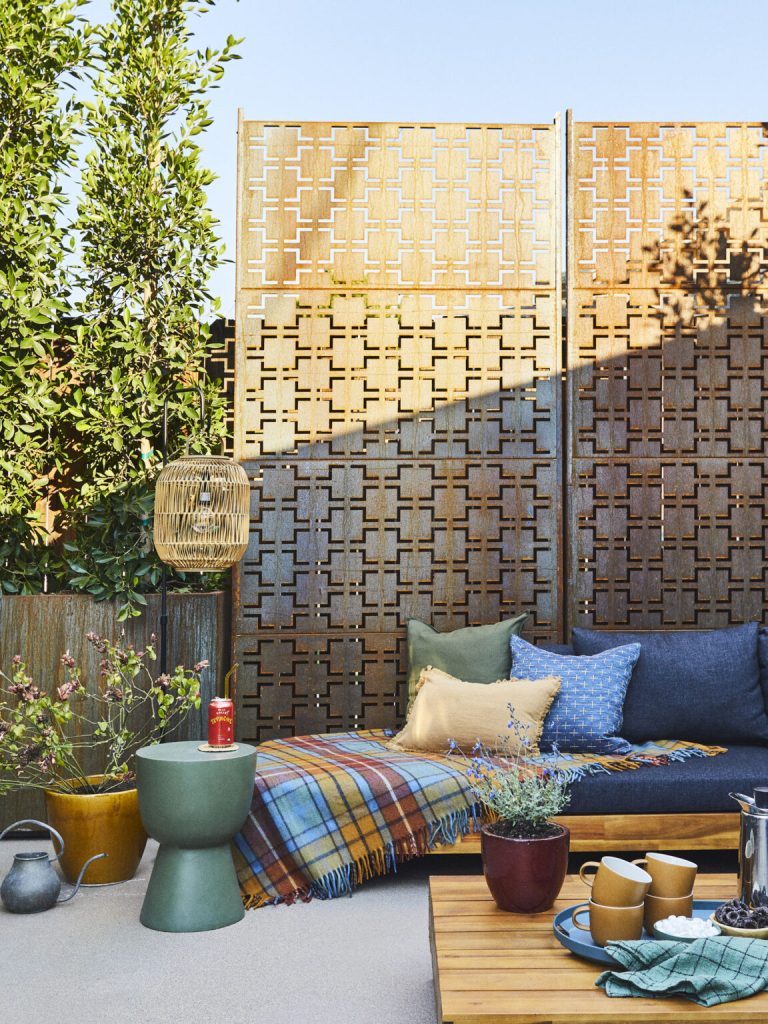
Planters and pots: Groupings of colorful containers create visual interest at varying heights. Try clustering terra cotta pots in different sizes for a Mediterranean feel, or arrange glossy cobalt blue planters for striking contrast against green foliage.
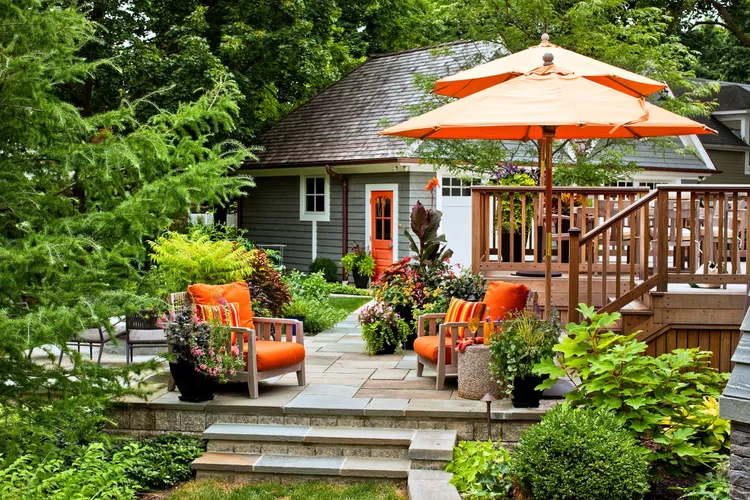
Shade elements: Umbrellas, canopies, and pergola coverings occupy significant visual space. A striped awning or emerald green market umbrella can establish your color theme while providing essential shade.
Working with Your Environment
Your patio doesn’t exist in isolation—it’s part of a larger landscape. Consider your surroundings when selecting colors:
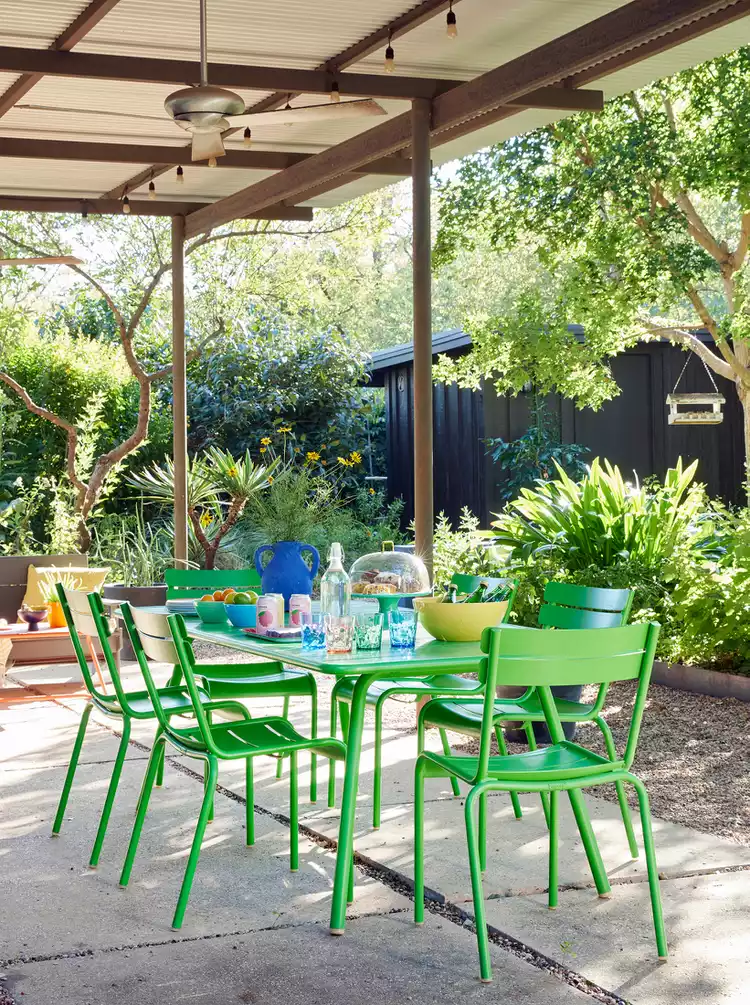
Garden views: If your patio overlooks lush plantings, echo those natural greens and florals in your furniture. A rose-colored bistro set can pick up similar tones from flowering bushes, creating visual harmony.

Architectural elements: Your home’s exterior provides important color cues. Furniture that complements your siding, stonework, or trim creates cohesion rather than competition. If your home features warm brick, furniture with terra cotta or golden accents will feel naturally integrated.
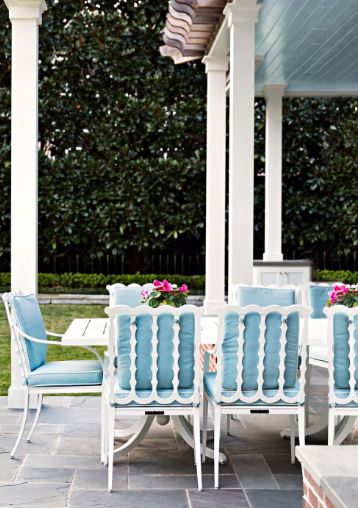
Regional influences: Your climate and location should inform color choices. Sun-drenched desert patios benefit from cooling blues and purples, while patios in cooler northern climates can feel warmer with rust and amber accents.
Making Colors Last Outdoors
The outdoor environment presents unique challenges for maintaining vibrant colors:
UV-resistant fabrics: Invest in quality outdoor textiles specifically designed to resist fading. Many manufacturers offer fabric lines with color warranties, ensuring your turquoise cushions won’t fade to pale blue after one season.
Weather-friendly finishes: For painted furniture, marine-grade finishes provide superior protection against sun damage and moisture. That cherry-red Adirondack chair will maintain its brilliance through many summers with the right protective coating.
Seasonal storage: Extend the life of your most colorful pieces by storing them during harsh weather. Cushions, in particular, will retain their vibrancy much longer when protected from continuous exposure.
Bringing It All Together

The most successful patio color schemes follow the 60-30-10 rule: 60% dominant color (typically in larger furniture pieces or flooring), 30% secondary color (in supporting furniture or large accessories), and 10% accent color (in small decorative items).
This balanced approach prevents color overwhelm while creating visual interest. For instance, a predominantly neutral patio with 30% sea blue elements and 10% coral accents creates a sophisticated coastal vibe that feels intentional rather than chaotic.
Your perfectly colored patio isn’t just about following trends—it’s about creating an outdoor extension of your home that enhances your lifestyle and reflects your personal taste. By strategically introducing colors that speak to you, you’ll create a space that doesn’t just look beautiful but feels exactly right for the way you live outdoors.

